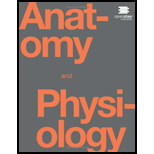
Visit this site (http://openstaxcollege.org/l/heartvalve) to observe an echocardiogram of actual heart valves opening and closing. Although much of the heart has been “removed” from this gif loop so the chordae tendineae are not visible, why is their presence more critical for the atrioventricular valves (tricuspid and mitral) than the semilunar (aortic and pulmonary) valves?
To analyze:
Why the presence of chordae tendineae is more critical for the atrioventricular valves than semilunar valves.
Introduction:
Chordae tendineae also called the heartstrings are closely associated with the papillary muscles of the atrioventricular valves. The semilunar valves, however, lack them.
Explanation of Solution
The atrioventricular valves are situated between the auricles and ventricles − the tricuspid valve between the right auricle and the right ventricle while the mitral or bicuspid valve between the left auricle and the left ventricle. They have papillary muscles attached to them. The chordae tendineae are string-like tendons which connect these valves to the papillary muscles.
During the pumping action of the heart, immense intraventricular pressure is created during systole or ventricular contraction. The atrioventricular valves shut their cusps to ensure no backflow of blood occurs from the ventricles to the auricles. The chordae tendineae play a vital role in holding the cusps of these valves in place and preventing the prolapsing of the mitral and tricuspid valves.
If we talk of the semilunar valves, their role to avoid back flow of blood is at the sites and situations where the pressure of the blood is lower compared to the atrioventricular valves. The pulmonary valve is present at the junction of the right ventricle and the pulmonary trunk. The aortic valve is present at the junction of the left ventricle and the aorta.
During the ventricular systole when the pressure in ventricles becomes greater than the pulmonary artery or the aorta these valves open an allow blood to flow though them. When the pressure in the ventricles decreases during diastole, these valves close on their own. Since their closure is directly associated with the lower pressure of blood they do not require strong tendons like chordae tendineae to keep them in position.
The mechanism and role of the closing of atrioventricular valves and the semilunar valves are directly related to the intraventricular pressure during the pumping action of the heart. During systole, when intra ventricular pressure is high the bicuspid and tricuspid valves close while the semilunar valves open. During diastole or low intraventricular pressure, the situation is reversed. Hence, the presence of chordae tendineae is more critical of atrioventricular valves than the semilunar valves.
Want to see more full solutions like this?
Chapter 19 Solutions
Anatomy & Physiology
Additional Science Textbook Solutions
Biological Science (6th Edition)
Genetic Analysis: An Integrated Approach (3rd Edition)
Human Physiology: An Integrated Approach (8th Edition)
Campbell Biology in Focus (2nd Edition)
Introductory Chemistry (6th Edition)
Campbell Biology: Concepts & Connections (9th Edition)
- Describe the principle of homeostasis.arrow_forwardExplain how the hormones of the glands listed below travel around the body to target organs and tissues : Pituitary gland Hypothalamus Thyroid Parathyroid Adrenal Pineal Pancreas(islets of langerhans) Gonads (testes and ovaries) Placentaarrow_forwardWhat are the functions of the hormones produced in the glands listed below: Pituitary gland Hypothalamus Thyroid Parathyroid Adrenal Pineal Pancreas(islets of langerhans) Gonads (testes and ovaries) Placentaarrow_forward
- Describe the hormones produced in the glands listed below: Pituitary gland Hypothalamus Thyroid Parathyroid Adrenal Pineal Pancreas(islets of langerhans) Gonads (testes and ovaries) Placentaarrow_forwardPlease help me calculate drug dosage from the following information: Patient weight: 35 pounds, so 15.9 kilograms (got this by dividing 35 pounds by 2.2 kilograms) Drug dose: 0.05mg/kg Drug concentration: 2mg/mLarrow_forwardA 25-year-old woman presents to the emergency department with a 2-day history of fever, chills, severe headache, and confusion. She recently returned from a trip to sub-Saharan Africa, where she did not take malaria prophylaxis. On examination, she is febrile (39.8°C/103.6°F) and hypotensive. Laboratory studies reveal hemoglobin of 8.0 g/dL, platelet count of 50,000/μL, and evidence of hemoglobinuria. A peripheral blood smear shows ring forms and banana-shaped gametocytes. Which of the following Plasmodium species is most likely responsible for her severe symptoms? A. Plasmodium vivax B. Plasmodium ovale C. Plasmodium malariae D. Plasmodium falciparumarrow_forward
- please fill in missing parts , thank youarrow_forwardplease draw in the answers, thank youarrow_forwarda. On this first grid, assume that the DNA and RNA templates are read left to right. DNA DNA mRNA codon tRNA anticodon polypeptide _strand strand C с A T G A U G C A TRP b. Now do this AGAIN assuming that the DNA and RNA templates are read right to left. DNA DNA strand strand C mRNA codon tRNA anticodon polypeptide 0 A T G A U G с A TRParrow_forward
 Human Physiology: From Cells to Systems (MindTap ...BiologyISBN:9781285866932Author:Lauralee SherwoodPublisher:Cengage Learning
Human Physiology: From Cells to Systems (MindTap ...BiologyISBN:9781285866932Author:Lauralee SherwoodPublisher:Cengage Learning Biology 2eBiologyISBN:9781947172517Author:Matthew Douglas, Jung Choi, Mary Ann ClarkPublisher:OpenStaxSurgical Tech For Surgical Tech Pos CareHealth & NutritionISBN:9781337648868Author:AssociationPublisher:Cengage
Biology 2eBiologyISBN:9781947172517Author:Matthew Douglas, Jung Choi, Mary Ann ClarkPublisher:OpenStaxSurgical Tech For Surgical Tech Pos CareHealth & NutritionISBN:9781337648868Author:AssociationPublisher:Cengage





